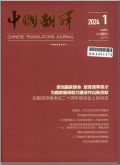The Gloosy Ganoderm: Systemic Functional Linguistics and Translation
@@ When we investigate translation from the standpoint oflinguistic science, we are applying our understanding oflanguage as a ”semogenic”, or meaning-making, systemin two stages. On the one hand, translation theory is a do-main of research (along with, for example, literary studies)in descriptive and comparative linguistics. On the other hand,translation practice is an activity that has a high value in oursocal and cultural life; it requires the training of translators,the production of dictionaries and other multilingualmaterials, and even the setting up of special institutions forprofessional translators to work in. So we start by”unpacking” the concept of translation, seeing it as a rela-tion between languages, and as a process of moving fiomone language into another. In either of these two perspectives,translation is an extraordinarily complex achievement ofthe human brain. The translator may be ”invisible”, inVenuti” s term (Venuti, 1995); but the translation processhas to be illuminated, so that we can see it. This means thatwe have to direct light on it from many angles, such as aredetermined by the nature of language itself.
translation、language、understanding、institutions、comparative、setting up、nature of、research、practice、hand、cultural、studies、special、complex、two、theory、means、light、human、work
30
H3(常用外国语)
2009-05-08(万方平台首次上网日期,不代表论文的发表时间)
共10页
17-26






